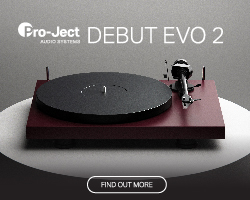When the Clones Amplifier was first ordered From Hong Kong I just sat back and thought to myself, this will take some  time in arriving! But imagine my surprise,when a few days later the Unit arrived, I was astonished. If only our post office could do as well… the unit was also undamaged. The packaging was well thought out and would have withstood a bomb blast.
time in arriving! But imagine my surprise,when a few days later the Unit arrived, I was astonished. If only our post office could do as well… the unit was also undamaged. The packaging was well thought out and would have withstood a bomb blast.
The amplifier consists of a hand made brushed alloy case, which has sides, bottom, and top panel fashioned from 4mm thick alloy. The Front panel is made from 8mm material and the fixings are thoughtfully chosen, using Pozidrive headed machine bolts. This method of construction is rather unusual in comparison the the mass produced equipment I have seen over the years where self tapping screws are the norm. I am sure that we have all cursed Hi-Fi manufacturers when we couldn’t get a screw out of a case because it is poorly built. The Clones unit doesn’t do this, rather the screws are easily removed with the correct screwdriver. And one doesn’t have to be built like Charles Atlas either, they were just “Nipped”, so they were tight. There are no user controls inside the case!
The controls on the front panel are a three way signal input selector and a volume control. The volume control is an Alps unit. The controls have a “weight” to the touch and operate with no clicks nor bangs. It also sports a green power on indicator, rather than that horrid blue high intensity LED that is the fashion at the moment, the indicator doesn’t draw our attention when powered up, rather it just tells us the the 25i is on! The power switch was put on the rear panel because the manufacturer said that it was meant to be switched on and left on. Although when away from your listening room for long periods of time, I would always switch it off!
On the rear of the case are located the mains input, a switched and fused IEC socket. The back panel also sports the  rather sturdy loudspeaker binding posts, two pairs, and three pairs of excellent phono inputs, these are all line inputs.
rather sturdy loudspeaker binding posts, two pairs, and three pairs of excellent phono inputs, these are all line inputs.
After removing the top panel, which was a joy, we see a toroidal transformer in the front compartment and two output circuit boards, with wiring carefully chosen for the application. The volume control and signal selector are mounted on the internal heatsink plate at the rear of the case. This has two advantages in that the manufacturer can use the volume control passively, and the selector switch is mounted next to it, meaning that this preamp will not suffer with vagaries of signal lead length. A very thoughtful hand built unit!
So to round up, a very well though out amplifier, that just oozes Class!
THE LISTENING
This unit was just popped into my system in the place where my Crown power amplifier usually lives. This is about 5 metres, signal lead length, from my front end components. I lit it up and selected the input, then advanced the signal level, very carefully at first to get the level correct for my room. At first I used my IAS Beaulieu,  ¼ wave rear loaded bass drivers, which have a stable impedance, of about 9 ohms.
¼ wave rear loaded bass drivers, which have a stable impedance, of about 9 ohms.
The first compact disc was from Enya, Shepherd Moons, this is a well recorded disc with loads of acoustic instruments.
THE LISTENING TEST.
From the first note of this performance I knew this amplifier was something special! It delivered the music in an even handed way. This is rather unusual these days, with mass market products built to deliver a certain type of “sound” – this amplifier just delivered the music into my spacious listening room. Piano and voice sound as good as my venerable Crown, a really great compliment from me!
Now bear in mind that the Crown is capable of delivering >180 Watts RMS, the Clones unit, for all its size, had no business sounding as good as it did. Image width was a tad smaller, depth of the perceived stereo stage, was curtailed by a few feet. Although the height of the image was about the same. The music also had drive and punch when needed, and stopped and started sharp as a knife.
After a few minutes I forgot about the Clones amplifier and just relaxed into the sumptuous sound.
Next disc into my CD player was Miles Davis, “Kind of Blue” CK64935 on the Columbia label. From the opening bars with bill Evans and Paul Chambers this was a delight to listen to. The stereo image was wide and displayed loads of depth, with none of the seering treble that budget amps often show. Although I felt that the bass was slightly loose in its presentation. But after listening to the whole disc my conclusions were that this was a neutral sounding amplifier, following the words of Peter Walker, of Quad, “All that is asked of a Hi-Fi is to reproduce the original as accurately as possible”. This piece of equipment does that. The trumpet was not highlighted, rather it was reproduced with remarkable subtlety, along with the percussion. Although this is a simple disc to play, with no distortion due to overloading the mixer the music that poured out of my speakers was amongst the best I have ever heard.
A change of pace was indicated next so my ageing copy of Al Di Meola, “The Infinite Desire” , was tried.
This was recorded by Telarc, CD-83433, and has an extremely wide dynamic range. As a result of this the volume level was rotated with caution! This was to avoid the amplifier from exceeding its power capability, often known as “clipping”. The resulting sound was glorious! Now this album is a difficult test due to the complexity of the music. Although my friends have not liked it as much as me, it genuinely showcases Al’s mastery of his instrument. From the first track to the last the musicians were displayed with pace and drive, also they were sitting in space, with a huge stereo image with cavernous depth and the correct height. The bass and drums are some of best ever recorded and were reproduced very, very accurately! I decided it was time for a rest so I dialled up Radio 4 on my trusty Optonica Tuner, the news was read with that touch of warmness in the sound the Radio 4 is famous for. This is a remarkable result for an amplifier of this price.
Eva Cassidys album “Imagine” was reproduced in a similar fashion. With her crystalline vocals to the richness of the guitar, she was just slightly to the right of centre, the rest of the musicians were in a large arc behind her. She uses instruments as varied as violins and a solo vibraphone. As we all know the bass performance of any piece of equipment will either destroy the image or enhance it. In this case the bass of Chris Biondo was correctly perceived. And the size of the recorded space was correctly described.
To check the performance I decided to change my loudspeaker, the new speakers were Castle Pembroke, a reflex design using an 8 inch bass driver in a cab of 1bout 11 inches by 11 inches by 22 high. These are a two way design utilising a 12 dB per octave crossover. These have not been modified since they were purchased some years ago. Although they needed a slight higher level as they were not as efficient as my ¼ wave horn loaded Beaulieu. They did give a good account of themselves and still gave an exaggerated musical performance. The first thing I did notice was that the bass was much tighter! This was due to the design of the loudspeakers and the fact that they use an 8 inch bass unit rather than a 10 inch unit.
But they sounded delicious!
The same disc was used and the level was matched, the sound had shrunk a little with not as much bass extension, although the treble and mid was as well reproduced!
The last popular music disc, as far as this review is concerned was from Joni Mitchell, “Turbulent Indigo” released on the Reprise label, 9362-45786-2. The album opens with, Sunny Sunday, that instils the feeling of a Californian Sunday , Jonis rich vocal delivery was so stunning! She was, definitely, the “Blues” singer that was never discovered. Her diction and the instruments were delivered into my listening room with precision and a very wide stereo image. Along with musicians Wayne Shorter, who blows a mean sax, Larry Kline playing bass and Michael Landau on electric guitar, this album is a magnificent reproduction. Again she was placed just slightly off centre with the instruments in a huge arc behind her. I could tell that this album was mixed by a professional, who had a huge amount of experience to draw upon! From the microphone positioning to the bass sound this has to be one of the stand out albums of the last century. Again the sound was “rich” and had considerable delicacy as well. Her diction was so good as to enable me to listen to the stories she was singing with remarkable ease.
The Clones amplifier was no slouch with Orchestral Classical as well! Always delivering a very easy to listen to musical experience.
CONCUSIONS.
I will make no bones about this amplifier, this is a SUPERBY built and well voiced unit. It is simple to use, just plug it in and switch it on, then it delvers the music and the emotions of the musicians. As my Journeyman once said, “Simple engineering is elegant engineering!”
I can not recommend this unit too much. From its tactile controls to the heft of the case work this amplifier has restored my faith in the Hi Fi industry.
I will be sad to see it go and will definitely miss it.
25 Watts per channel.
Gain……….30dB
Input Impedance……22kOhm
Three pairs of inputs.
Two pairs of Loudspeaker terminals.
Weight……4.2 Kilos
size………..17mm wide, 100mmhigh, 170mm depth.
Warranty 5 Years
Price……….. US$ 629
Author -Stewart Wennen
Want to read more hifi reviews?















































































































































































































I read the review of the clones audio 25i. I have built several gainclones and there are two chips that are normally used, the National Semiconductor LM3886 and the LM3875. The review does not say if either of these were used, or whether another op-amp was used for the driver stage. Most gainclones sound much as the reviewer describes, honest and insightful, without drawing attention to themselves. It would be nice to have some information about the driver.